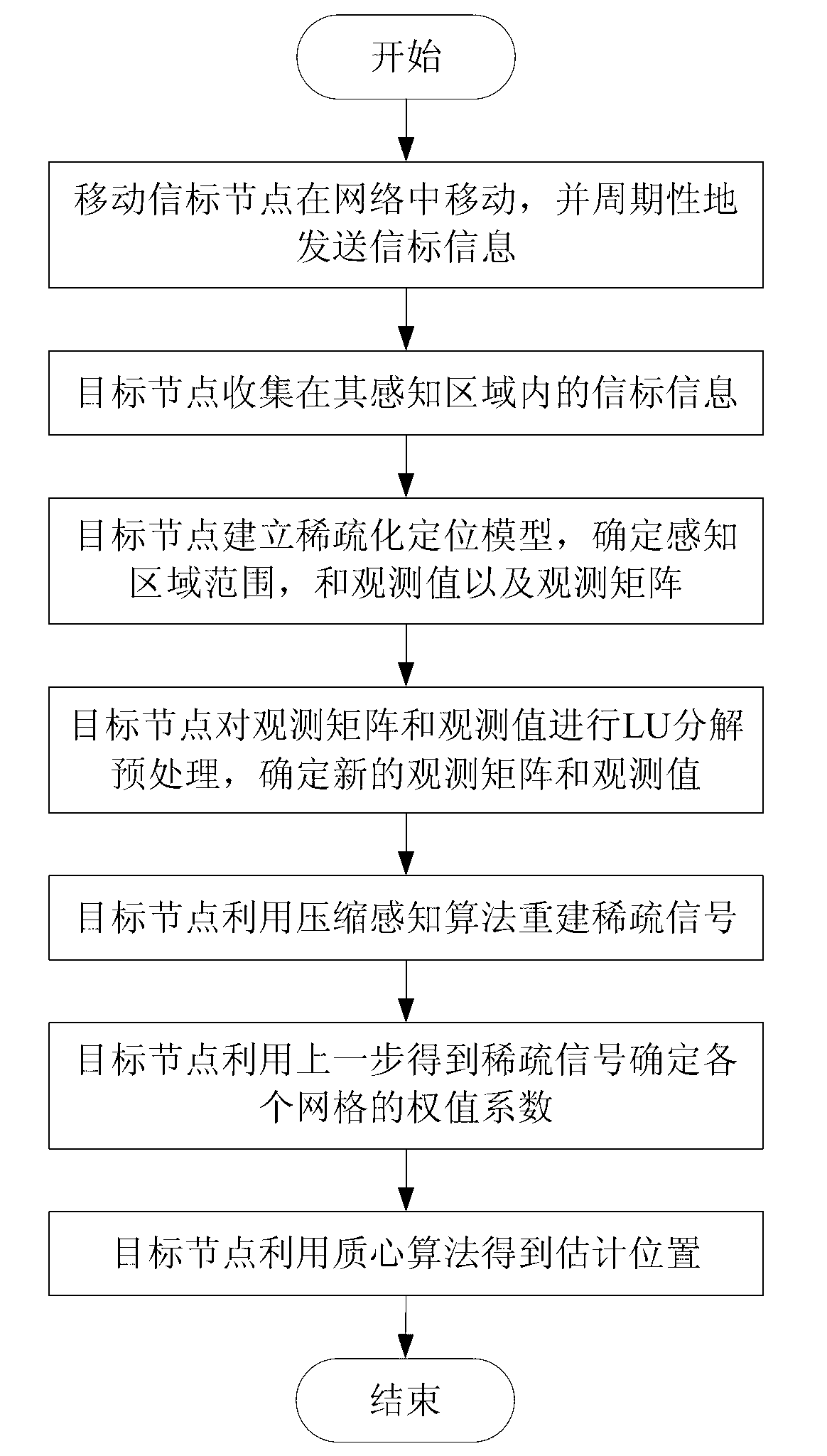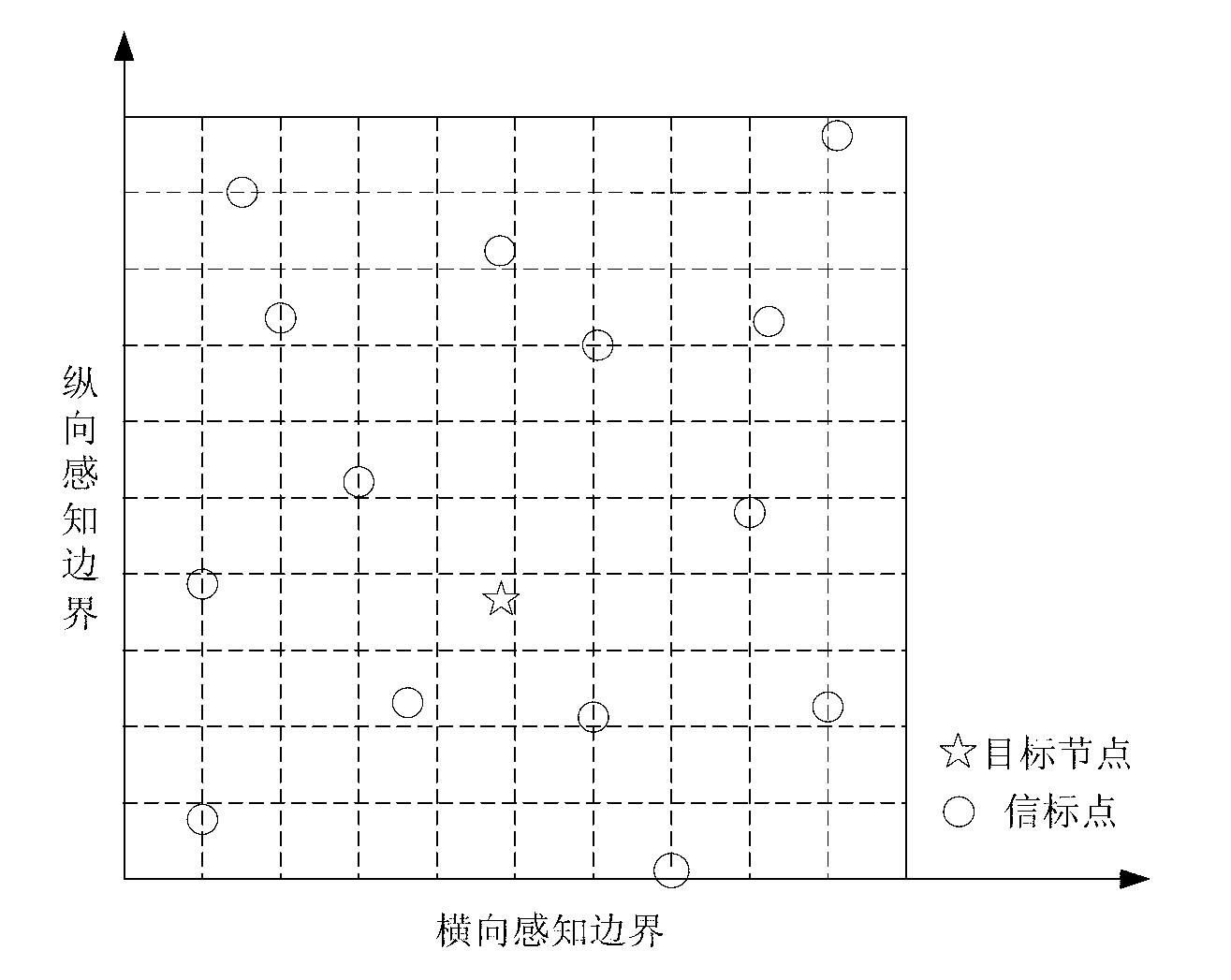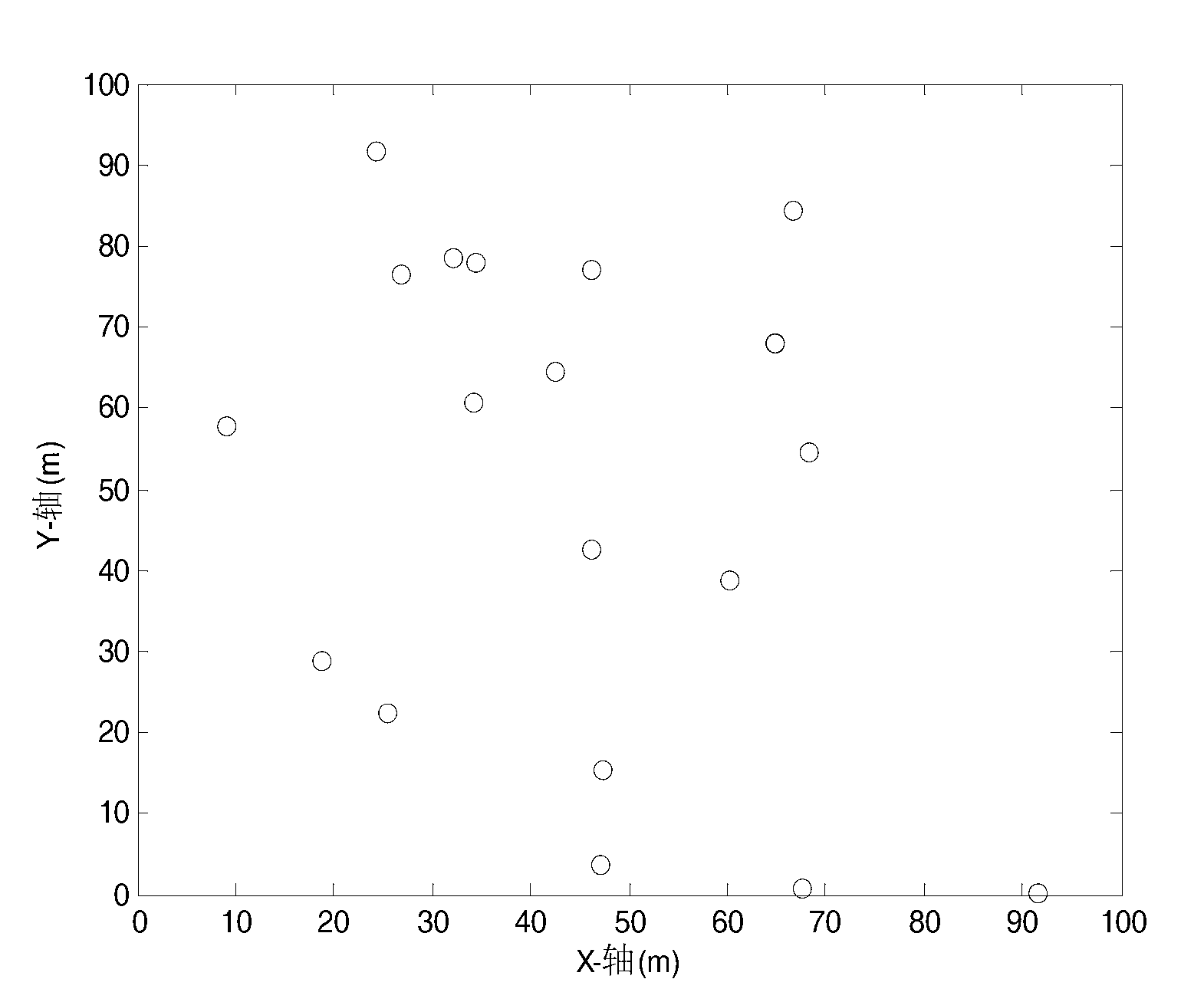Sparse node positioning algorithm
A node positioning and sparse technology, which is used in positioning, transmission monitoring, measurement devices, etc., can solve the problems that the positioning accuracy of the MAP algorithm is easily affected by the chord azimuth accuracy, the HADO algorithm has a large amount of calculation, and the moving path has a high level. To achieve the effect of convenience, improved reliability, and simple positioning
- Summary
- Abstract
- Description
- Claims
- Application Information
AI Technical Summary
Problems solved by technology
Method used
Image
Examples
Embodiment
[0070] refer to Figure 5 , Figure 6 , 1000 common nodes are randomly distributed in a square area of 100m×100m. The communication radius of all ordinary nodes and beacon nodes in the area is 20m, and the maximum moving speed of the beacon node is 20m / s, and its moving path follows the RWP model. Among them, the algorithm divides the node sensing area into a grid of 15×15, and the signal strength P t =-40dBm, the signal-to-noise ratio is 20dB. When the number of beacon points perceived by the node is less than 8, M takes the actual number of beacon points; when it is greater than or equal to 8, take the 8 beacon points with the strongest signal strength for positioning, that is to say, M=8 . In the algorithm, the beacon node is set to broadcast a beacon signal every 1 second, broadcasting 400 times (the following simulation experiment parameters are the same as this parameter). Figure 5 and Figure 6 Respectively described in the ideal environment ( image 3 ) and i...
PUM
 Login to View More
Login to View More Abstract
Description
Claims
Application Information
 Login to View More
Login to View More - R&D
- Intellectual Property
- Life Sciences
- Materials
- Tech Scout
- Unparalleled Data Quality
- Higher Quality Content
- 60% Fewer Hallucinations
Browse by: Latest US Patents, China's latest patents, Technical Efficacy Thesaurus, Application Domain, Technology Topic, Popular Technical Reports.
© 2025 PatSnap. All rights reserved.Legal|Privacy policy|Modern Slavery Act Transparency Statement|Sitemap|About US| Contact US: help@patsnap.com



